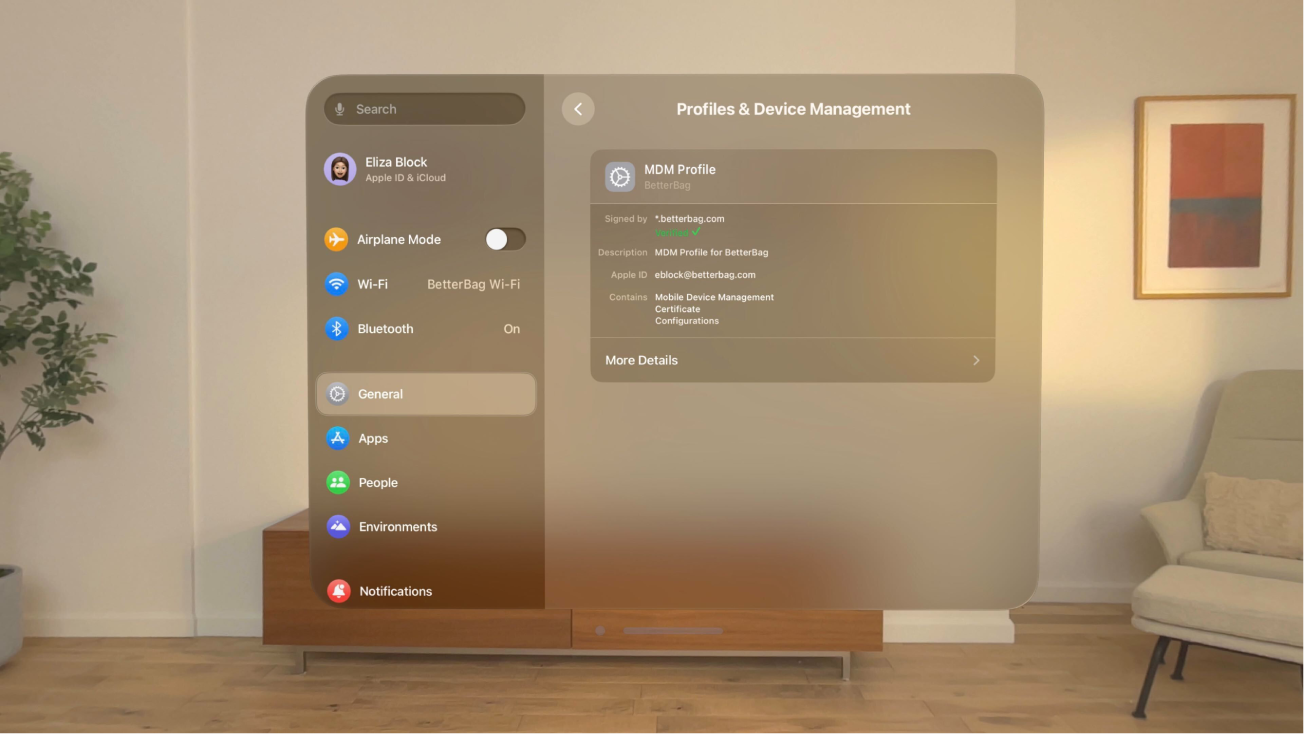Apple Platform Deployment
- Welcome
- Intro to Apple platform deployment
- What’s new
-
-
- Declarative app configuration
- Authentication credentials and identity asset declaration
- Background task management declarative
- Calendar declarative configuration
- Certificates declarative configuration
- Contacts declarative configuration
- Exchange declarative configuration
- Google Accounts declarative configuration
- LDAP declarative configuration
- Legacy interactive profile declarative configuration
- Legacy profile declarative configuration
- Mail declarative configuration
- Maths and Calculator app declarative configuration
- Passcode declarative configuration
- Passkey Attestation declarative configuration
- Safari extensions management declarative configuration
- Screen Sharing declarative configuration
- Service configuration files declarative configuration
- Software Update declarative configuration
- Software Update settings declarative configuration
- Storage management declarative configuration
- Subscribed Calendars declarative configuration
-
- Accessibility payload settings
- Active Directory Certificate payload settings
- AirPlay payload settings
- AirPlay Security payload settings
- AirPrint payload settings
- App Lock payload settings
- Associated Domains payload settings
- Automated Certificate Management Environment (ACME) payload settings
- Autonomous Single App Mode payload settings
- Calendar payload settings
- Mobile payload settings
- Mobile Private Network payload settings
- Certificate Preference payload settings
- Certificate Revocation payload settings
- Certificate Transparency payload settings
- Certificates payload settings
- Conference Room Display payload settings
- Contacts payload settings
- Content Caching payload settings
- Directory Service payload settings
- DNS Proxy payload settings
- DNS Settings payload settings
- Fonts payload settings
- Domains payload settings
- Energy Saver payload settings
- Exchange ActiveSync (EAS) payload settings
- Exchange Web Services (EWS) payload settings
- Extensible Single Sign-on payload settings
- Extensible Single Sign-on Kerberos payload settings
- Extensions payload settings
- FileVault payload settings
- Finder payload settings
- Firewall payload settings
- Fonts payload settings
- Global HTTP Proxy payload settings
- Google Accounts payload settings
- Home Screen Layout payload settings
- Identification payload settings
- Identity Preference payload settings
- Kernel Extension Policy payload settings
- LDAP payload settings
- Lights Out Management payload settings
- Lock Screen Message payload settings
- Login Window payload settings
- Managed Login Items payload settings
- Mail payload settings
- Network Usage Rules payload settings
- Notifications payload settings
- Parental Controls payload settings
- Passcode payload settings
- Printing payload settings
- Privacy Preferences Policy Control payload settings
- Relay payload settings
- SCEP payload settings
- Security payload settings
- Setup Assistant payload settings
- Single Sign-on payload settings
- Smart Card payload settings
- Subscribed Calendars payload settings
- System Extensions payload settings
- System Migration payload settings
- Time Machine payload specifics
- TV Remote payload settings
- Web Clips payload settings
- Web Content Filter payload settings
- LDAP payload settings
-
- Glossary
- Document revision history
- Copyright

Deploy Apple Vision Pro
Apple Vision Pro is a spatial computer that blends digital content and apps into a user’s physical space, and lets them navigate using their eyes, hands and voice. Using visionOS 1.1 or later, you can manage specific settings with a mobile device management (MDM) solution using the MDM protocol and declarative device management. Users can also sign in with a Managed Apple Account using federated authentication.

The following methods can be used to enrol Apple Vision Pro into your MDM solution:
Account-driven User Enrolment: Designed for BYOD and has similar capabilities to User Enrolment for iPhone and iPad.
Account-driven Device Enrolment: Designed for devices owned by the organisation. It’s similar to Device Enrolment but allows for fewer management capabilities.
Automated Device Enrolment: Designed for all Apple devices owned by the organisation. Automated Device Enrolment lets organisations configure and manage devices from the moment the devices are removed from the box.
Each enrolment method enables data separation, which cryptographically separates work from personal data in Calendar, iCloud Drive, Notes and Reminders.
visionOS 1.1 or later also supports the following:
Configuring mail, calendar and contact accounts
Managing Wi-Fi networks
VPN connections including per-app VPN
Managed Device Attestation
Single sign-on extensions
Deploying apps
Managed Apps
iPhone- and iPad-compatible apps
visionOS apps that use the same binary as iPhone, iPad or Mac apps
Proprietary in-house visionOS apps
For a list of payloads, restrictions, commands and declarative configurations, see the following: